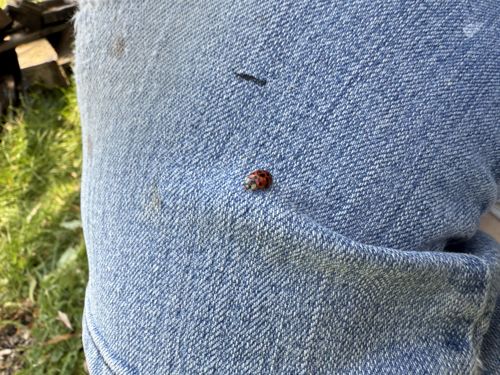Ladybug (or Ladybird beetle)
Scientific Name: Coccinellidae (family)
Order & Family: Order: Coleoptera, Family: Coccinellidae
Size: Typically 1 to 10 mm (0.04 to 0.4 inches) in length.

Natural Habitat
Gardens, agricultural fields, meadows, forests, and other areas with abundant plant life and aphid populations.
Diet & Feeding
Primarily predatory, feeding on soft-bodied insects like aphids, mealybugs, scale insects, and mites. Some species may also consume pollen or nectar.
Behavior Patterns
Ladybugs are typically solitary but can aggregate in large numbers for overwintering. They undergo complete metamorphosis (egg, larva, pupa, adult). Adults are known for their bright coloration as a warning to predators.
Risks & Benefits
Benefits: Ladybugs are highly beneficial insects, widely used in biological pest control due to their voracious appetite for aphids and other destructive garden pests, thus reducing the need for chemical pesticides. Risks: Some invasive species, like the Harlequin ladybug (Harmonia axyridis), can outcompete native species and, in rare cases, bite humans, though their bite is generally harmless. They can also overwinter indoors in large numbers, becoming a nuisance.
Identified on: 9/18/2025